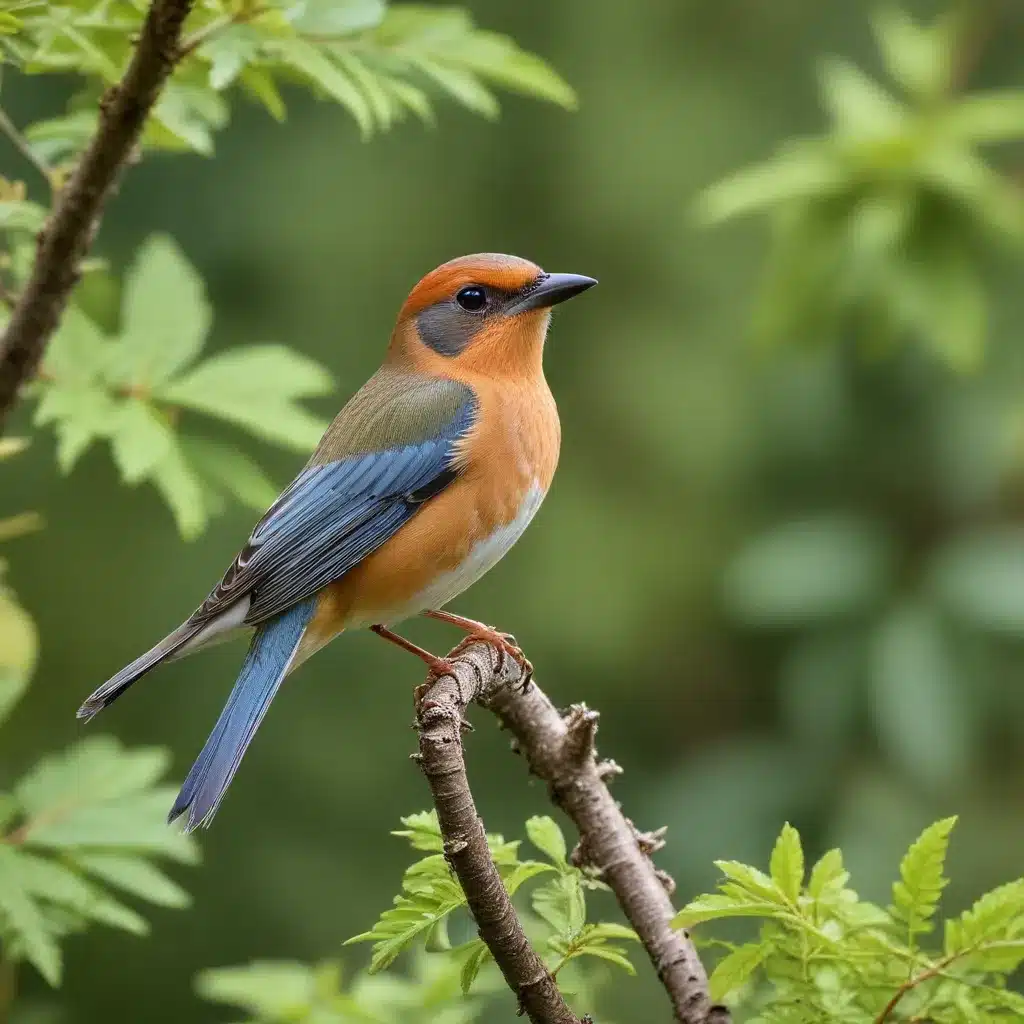
Birds in the Backyard
As an experienced avian caretaker, I’ve had the pleasure of witnessing the incredible diversity of bird species that can thrive in even the most modest of backyard habitats. From the familiar year-round residents to the captivating migratory visitors, your outdoor space holds immense potential to become a vibrant avian oasis.
Avian Diversity
Whether you live in an urban, suburban, or rural setting, your backyard likely plays host to a variety of common backyard birds. Species such as the ever-cheerful American Robin, the energetic Black-capped Chickadee, and the striking Northern Cardinal are just a few of the feathered friends you may spot flitting among the trees and shrubs.
But the true magic happens during the seasonal bird migrations, when your backyard can transform into a veritable birdwatching bonanza. As the weather changes, waves of migratory birds pass through, pausing to refuel and rest on their long journeys. The spring and fall migrations, in particular, offer opportunities to glimpse a dazzling array of warblers, thrushes, and other neotropical migrants. With a little patience and a keen eye, you may even spot rarities like the Painted Bunting or the elusive Cerulean Warbler.
Backyard Habitat Design
The key to attracting and supporting a diverse avian community lies in creating a backyard habitat that caters to their varied needs. Start by selecting native plants that provide essential resources, such as food, shelter, and nesting sites. Native species like serviceberry, black-eyed Susan, and native grasses not only offer sustenance for birds but also support the broader ecosystem.
Thoughtfully positioning birdhouses of various sizes and styles can also invite cavity-nesting species like bluebirds, wrens, and woodpeckers to take up residence. Strategically placing these homes near your feeding stations and water sources can further encourage birds to make your backyard their home.
Feeding and Watering
Feeding Stations
Providing a reliable food source is a surefire way to draw birds into your backyard oasis. When selecting bird seed, opt for a high-quality mix that includes a variety of grains, nuts, and small seeds to cater to the diverse dietary needs of your feathered visitors. Supplement your feeders with suet cakes, which offer a rich source of energy, especially during the colder months.
Maintaining your feeding stations is just as important as stocking them. Keep feeders clean and well-stocked, and consider rotating their placement to prevent soil depletion and give birds a fresh perspective.
Water Features
No backyard habitat is complete without a reliable water source. Birdbaths, shallow ponds, or even simple dripping faucets can attract a wide range of birds, from the diminutive hummingbird to the majestic hawk. When designing your water feature, consider factors like depth, access, and placement to ensure it meets the needs of your avian guests.
Regularly cleaning and refreshing the water is crucial to maintaining its quality and preventing the spread of diseases. By providing a safe, reliable source of hydration, you’ll be rewarded with the soothing sights and sounds of birds splashing and quenching their thirst.
Nesting and Roosting
Nesting Preferences
Birds have diverse nesting requirements, and catering to their preferences can greatly increase the chances of them taking up residence in your backyard. Cavity-nesting species, such as bluebirds, chickadees, and woodpeckers, will appreciate the addition of well-placed birdhouses. Meanwhile, open-cup nesters, like robins and orioles, may be drawn to the dense foliage and sturdy branches of your native shrubs and trees.
Pay attention to the specific nesting behaviors and habitat preferences of the birds in your area, and adjust your landscape accordingly. Providing a variety of nesting options can support a wider range of species and contribute to the overall health and diversity of your backyard ecosystem.
Roosting Spots
In addition to nesting sites, birds also require safe and sheltered places to roost, especially during the colder months. Evergreen shrubs and trees, such as junipers, cedars, and pines, offer essential protection from the elements and potential predators. Strategically placing birdhouses and roosting pockets can also provide additional roosting opportunities for your avian guests.
Conservation and Monitoring
Threats to Backyard Birds
While your backyard oasis can be a haven for birds, it’s important to be mindful of potential threats to their well-being. Predators, such as domestic cats and outdoor-roaming pets, can pose a significant risk to nesting birds and their young. Pesticides and herbicides, even when used sparingly, can also have detrimental effects on the local bird population and the broader ecosystem.
Habitat fragmentation, caused by factors like urban development and intensive landscaping, can further disrupt the natural patterns and movements of birds. By being conscious of these threats and making informed choices, you can help create a safer, more sustainable environment for the birds in your backyard.
Citizen Science Opportunities
Monitoring the birds in your backyard can not only be a rewarding hobby but also a valuable contribution to the scientific community. By participating in citizen science initiatives, such as eBird or the Nest Watch program, you can help biologists and researchers better understand the distribution, behavior, and population trends of backyard birds.
Your observations, whether of a new species visiting your feeders or a successful nesting attempt, can provide valuable data that informs conservation efforts and habitat management strategies. By engaging in these citizen science projects, you’ll become an active steward of your local avian community.
As an experienced avian caretaker, I’ve witnessed firsthand the incredible diversity and beauty that can thrive in even the most modest of backyard habitats. By thoughtfully designing your outdoor space, providing essential resources, and participating in conservation efforts, you can transform your backyard into a true avian oasis – a sanctuary that celebrates the vibrant, ever-changing world of birds. So, grab your binoculars, fill your feeders, and get ready to embark on a birdwatching bonanza right in your own backyard!


